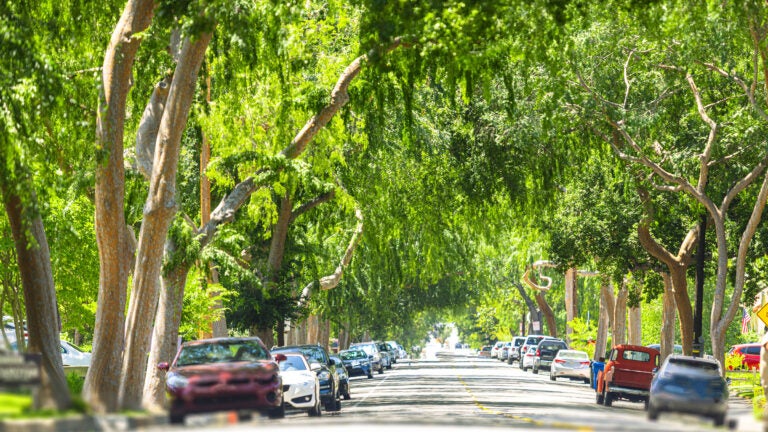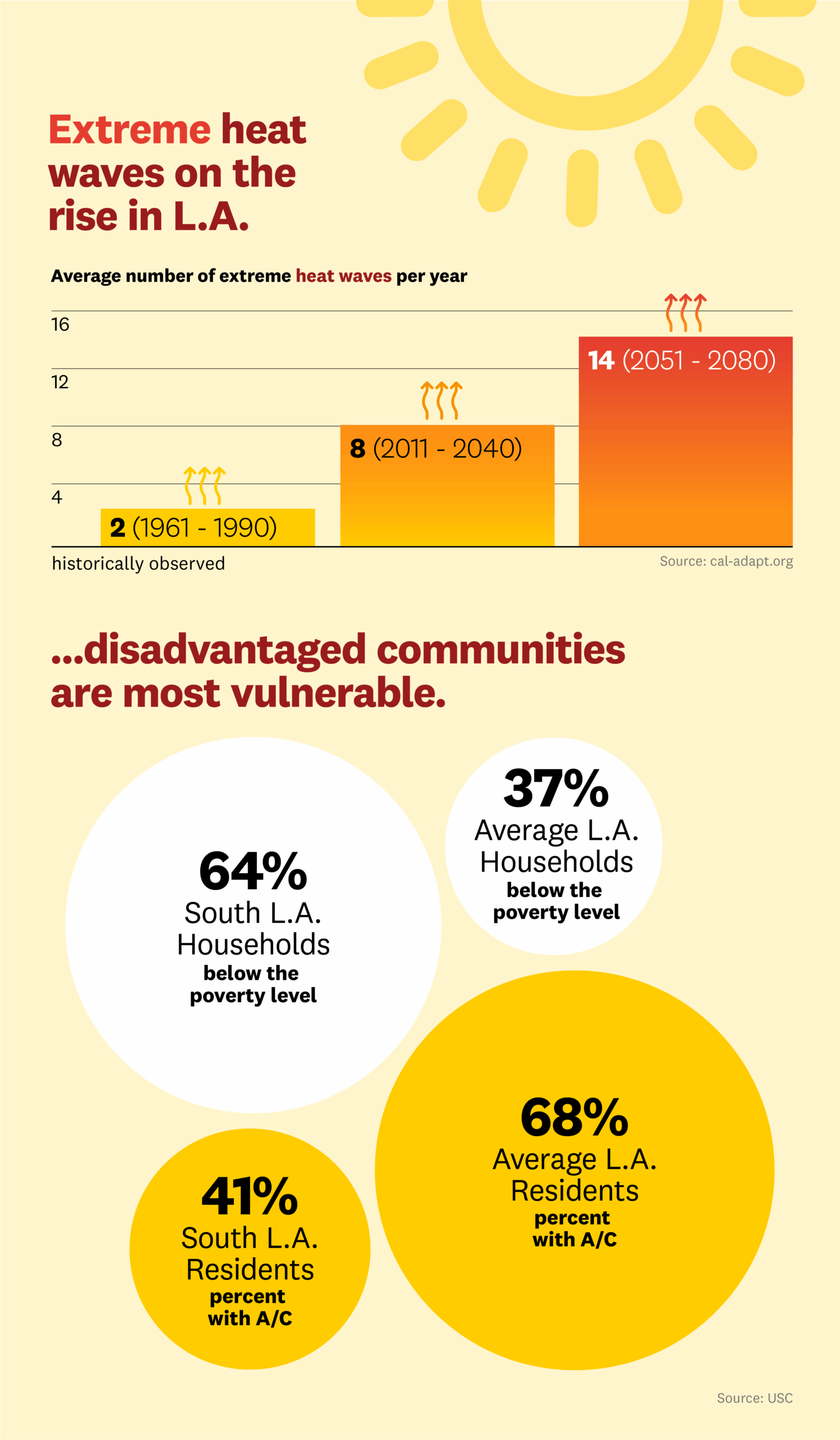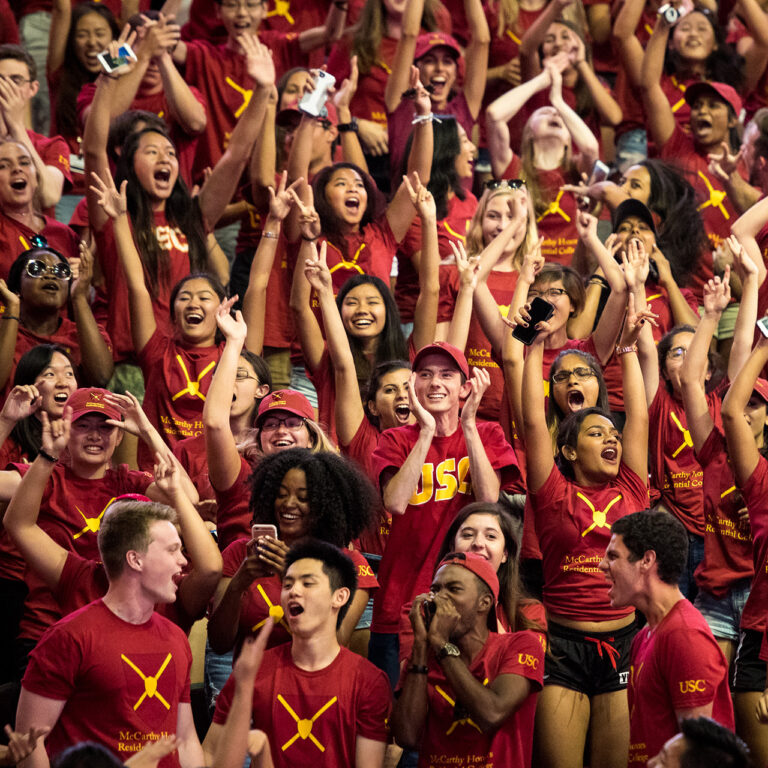(Photo/iStock)
Social Impact
USC teams up with ShadeLA coalition to cool Los Angeles ahead of 2028
ShadeLA, a new USC-led initiative, unites civic, academic and community partners to expand urban tree canopy and shade infrastructure — building lasting heat resilience for Angelenos well beyond 2028.
USC announces ShadeLA, a bold new collaborative effort to cool Los Angeles by expanding tree canopy and shade infrastructure in key public and community spaces.
With major sporting events like the 2026 FIFA World Cup, 2027 Super Bowl and the 2028 Olympic and Paralympic Games on the horizon — and as climate change drives more frequent and intense heat waves — ShadeLA aims to keep Angelenos and visitors safe while leaving a lasting legacy of resilience.
ShadeLA is led by USC Dornsife Public Exchange in collaboration with UCLA Luskin Center for Innovation, and with participation by the city of Los Angeles, County of Los Angeles Chief Sustainability Office, L.A. Metro and the Los Angeles Organizing Committee for the 2028 Olympic and Paralympic Games (LA28). The campaign is powered by a growing list of community-based organizations who have led on-the-ground shade projects across Los Angeles and the region, helping ensure solutions are locally driven and responsive to neighborhood priorities. ShadeLA builds on the city’s leadership on tree canopy equity and its longstanding partnership with USC’s Urban Trees Initiative.
“For years, USC Dornsife Public Exchange has been leading the way on sustainable urban forestry,” USC Interim President Beong-Soo Kim said. “Now, we’re proud to be spearheading ShadeLA, an important initiative that leverages our cutting-edge research to improve quality of life for all of us in Los Angeles.”
“Extreme heat continues to impact the lives of the people of Los Angeles, and this partnership empowers our communities to come together, build resilience and cool our neighborhoods,” L.A. Mayor Karen Bass said. “As we prepare to welcome the world, this initiative will leave a lasting legacy for Angelenos for years to come.”
ShadeLA: Tackling the deadliest climate threat of our time

Extreme heat is the most dangerous climate threat facing Los Angeles — one that’s growing more severe each year. The city’s dense population, concrete infrastructure and uneven tree cover amplify temperatures, especially in vulnerable neighborhoods. Extreme heat leads to an estimated 1,500 excess daily emergency room visits per “heat day” across L.A. County. By 2050, the number of extreme heat days is projected to increase by 31%, placing even greater strain on low-income communities and communities of color, who face higher risks of heat-related illness and limited access to cooling and care.
Shade is one of the most effective, low-cost ways to reduce heat risk. Whether from a tree, canopy, awning or bus shelter, shaded areas can feel between 35 degrees Fahrenheit to 70 degrees Fahrenheit cooler than in the sun. It’s simple, scalable and can be integrated into everyday spaces where people live, work and move.
Los Angeles County has less shade than the national average. Urbanized areas of the county only have an average of 21% shade at noon when the sun is directly overhead, compared with the national average of 27%, according to the UCLA Luskin Center for Innovation and their National Shade Map that is part of American Forests’ Tree Equity Score.
“ShadeLA is about more than trees and structures — it’s about people,” said Monica Dean, climate and sustainability practice director at USC Dornsife Public Exchange. “This campaign addresses heat not just as an environmental issue, but as a public health, infrastructure and community challenge. We’re designing solutions to protect lives — during major events and every day.”
What ShadeLA will do
The campaign focuses on four key goals:
- Add shade: ShadeLA is working with public agencies, schools, businesses and community organizations to bring new shade to the places people need it most — on schoolyards, sidewalks, parks and other everyday spaces.
- Protect existing shade: Maintaining the shade we already have — whether from mature trees or built structures — is critical to keeping communities cool. ShadeLA supports local caretakers, provides guidance and training, and works with public agencies to clarify responsibilities and secure funding for ongoing upkeep.
- Use science to inform decisions: Research, data and planning tools are used to pinpoint where shade is most needed, evaluate which solutions will have the greatest impact and track results over time. This evidence-based approach helps ensure that shade projects are not only well-placed, but also aligned with public health, climate and community priorities — turning research insights into real-world action.
- Make it easy to act: Adding shade shouldn’t be complicated — but too often, it is. ShadeLA works to streamline the process by offering practical tools, clear guidance and technical support for residents, businesses, schools and agencies. Many resources are already available, but confusion and misperceptions can stand in the way. By addressing these barriers head-on, the campaign empowers more people to take part in building a cooler Los Angeles.
These efforts will evolve and be developed in coordination with local communities and organizations across Los Angeles. Together, they aim to build a more comfortable and livable L.A., one shaded space at a time.
“We are committed to helping residents keep their cool as climate impacts intensify,” said Rita Kampalath, chief sustainability officer for Los Angeles County. “Creating more built and natural shade will not only benefit visitors, but will pay dividends for vulnerable residents for generations to come.”
From planting trees to building shade
USC Dornsife Public Exchange and the UCLA Luskin Center for Innovation bring considerable experience to ShadeLA. Public Exchange leads the USC Urban Trees Initiative, a multi-year, data-driven effort to help the city of Los Angeles prioritize tree planting in areas of greatest need. That work combines environmental, public health and equity data to guide tree planting efforts and contributed to the planting and care of nearly 1,000 trees in South and East Los Angeles.
UCLA is demonstrating how trees and other forms of shade affect people’s heat experiences and measuring the impact of shade in places such as homes, schools and streetscapes. For example, the new National Shade Map, developed by the UCLA Luskin Center for Innovation and American Forests, empowers communities to see when and where they have shade, providing decision-makers the first accessible, comprehensive opportunity to identify “shade deserts” and prioritize investments to mitigate the impacts of heat.
While trees are essential, they aren’t always feasible — especially in dense, paved or transit-heavy areas where space, soil and infrastructure constraints limit planting. ShadeLA builds on this foundation by expanding the focus to include built shade solutions like canopies, awnings and modular structures.
“We’re at a critical juncture as L.A. gets hotter, and we are thrilled to partner with USC, to lead with evidence, and to collectively envision a livable future for our region,” said Edith de Guzman, water and adaptation policy cooperative extension specialist at the UCLA Luskin Center for Innovation.
To launch the campaign, ShadeLA is introducing a set of activities to spark innovation, engage the public and guide smart investments. In the weeks ahead, new survey data from LABarometer, based at USC Dornsife’s Center for Economic and Social Research, will offer insights into how residents experience heat and value shade in their neighborhoods.
A global spotlight on Los Angeles
L.A. will soon welcome the world for major global sporting events. In 2026, SoFi Stadium will host eight FIFA World Cup matches, including the U.S. men’s national team opener. In 2028, Los Angeles will host the Olympic and Paralympic Games.
“LA28 is committed to incorporating sustainable solutions throughout the Games’ footprint,” said Becky Dale, vice president of sustainability at LA28. “ShadeLA supports not only keeping spectators cool during the Games, but also leaving a legacy of a cooler, greener Los Angeles for all Angelenos.”
By expanding shade and modeling collaborative climate action, ShadeLA aims to show how a major global city can tackle extreme heat while creating safer, healthier public spaces for everyone — now and for decades to come.
For more information, see the ShadeLA Fact Sheet.


